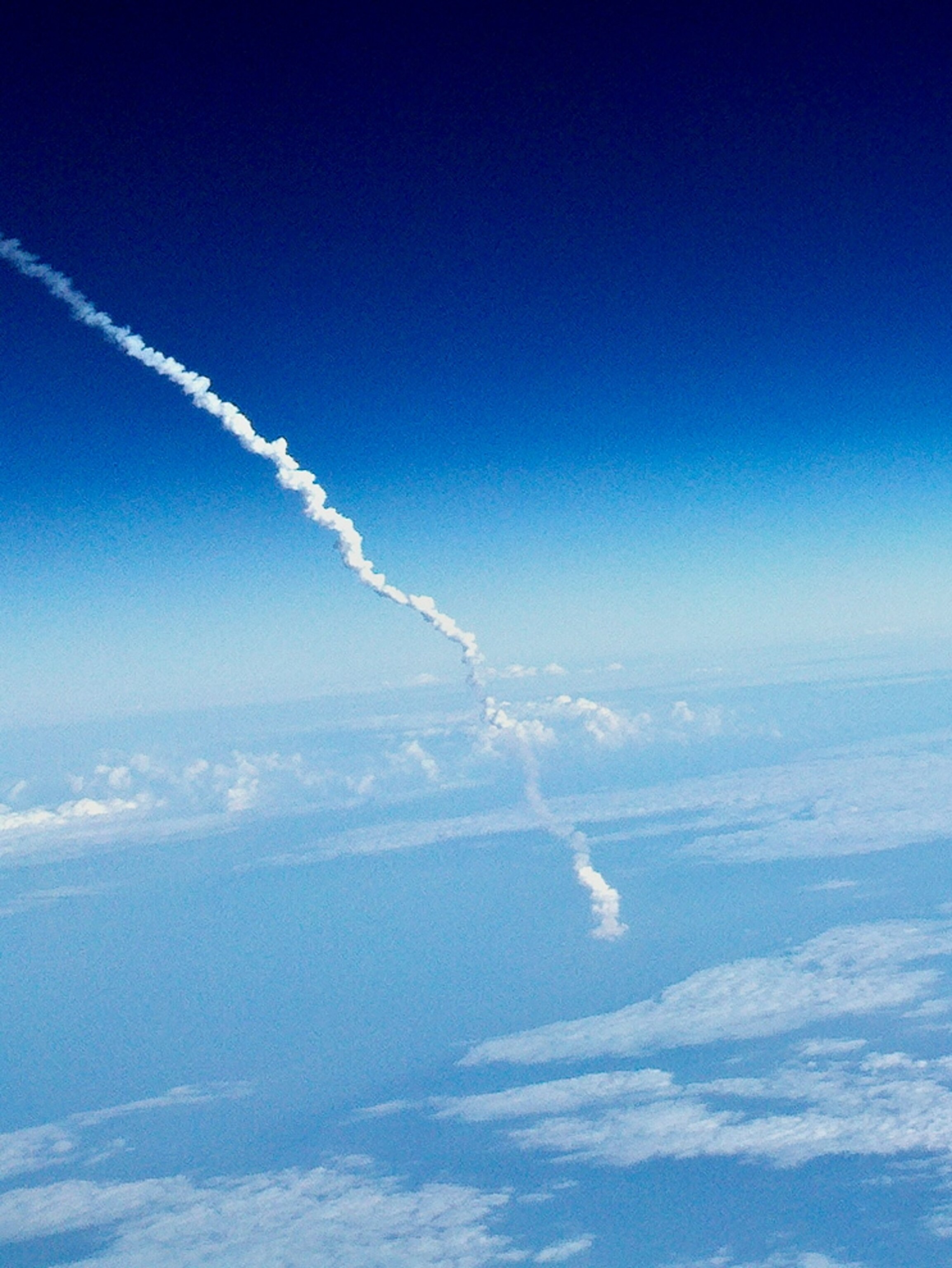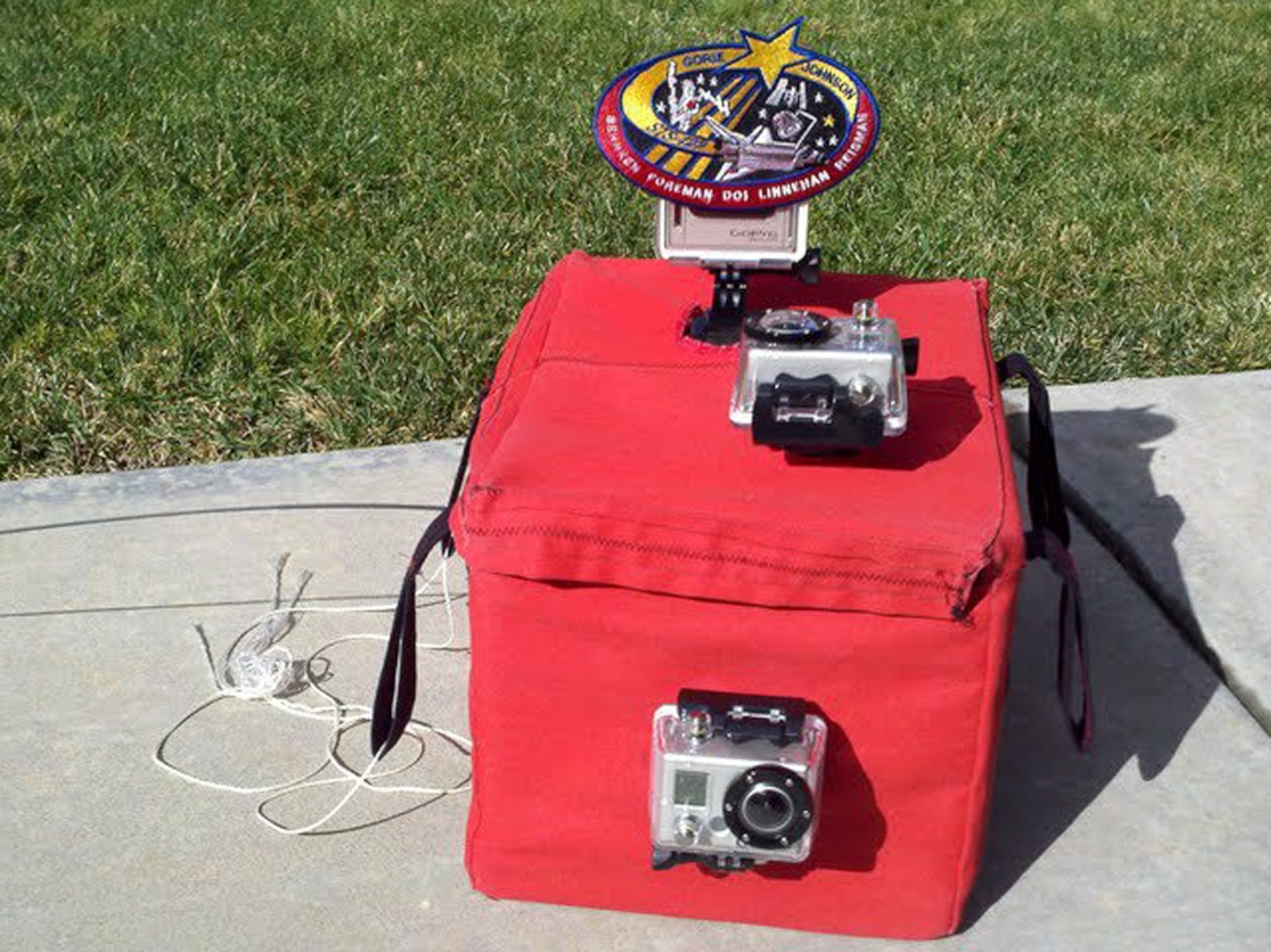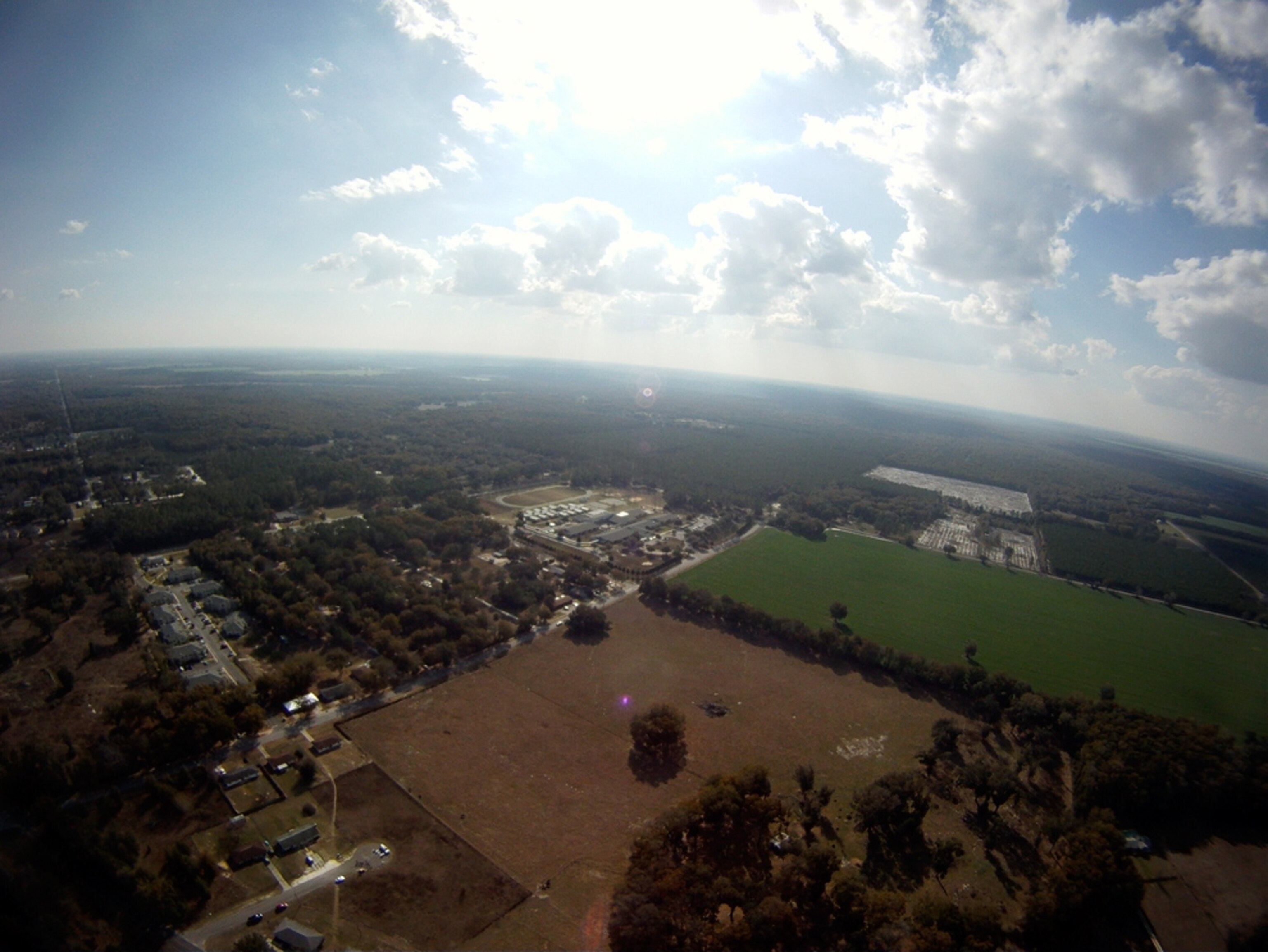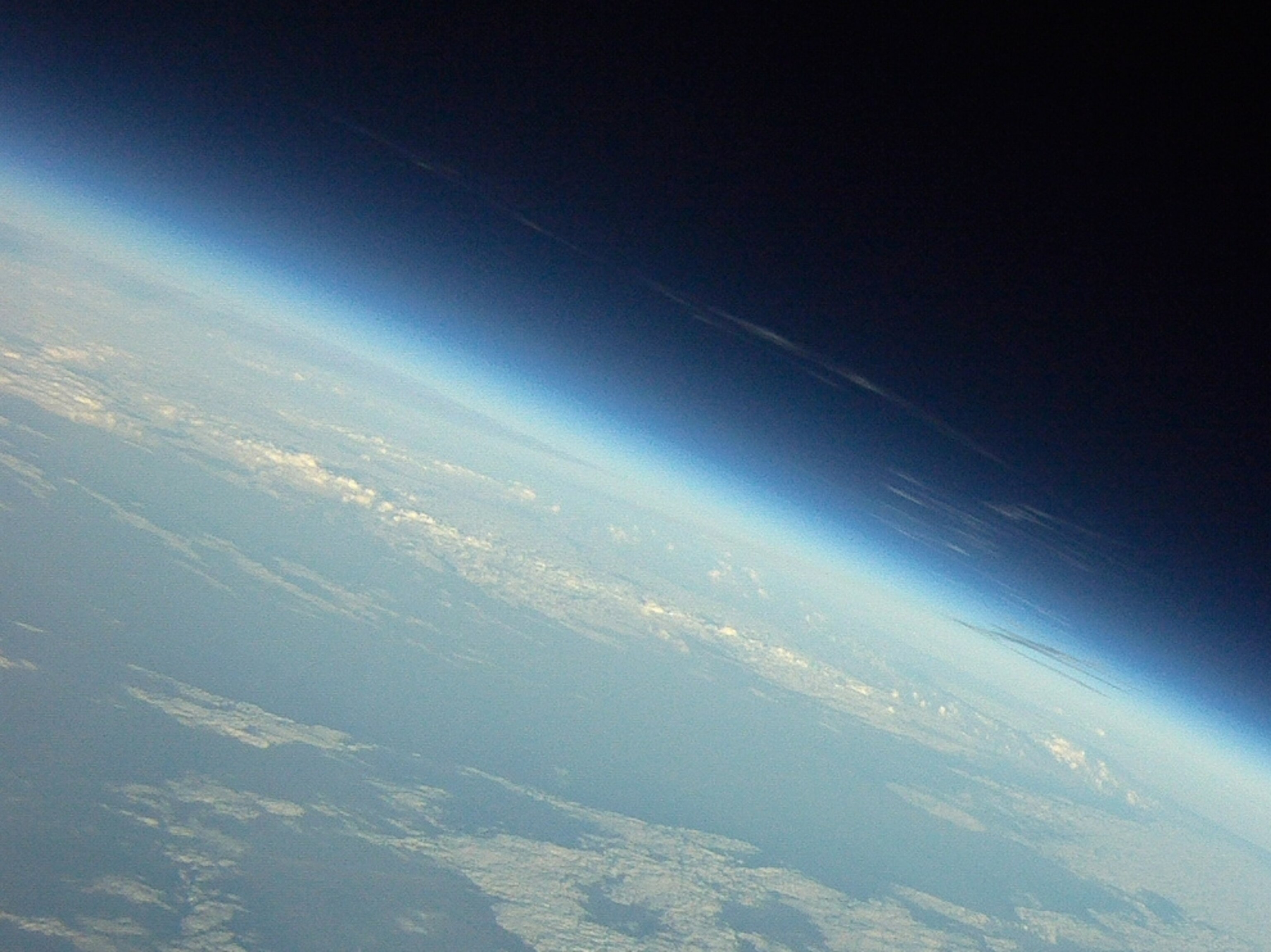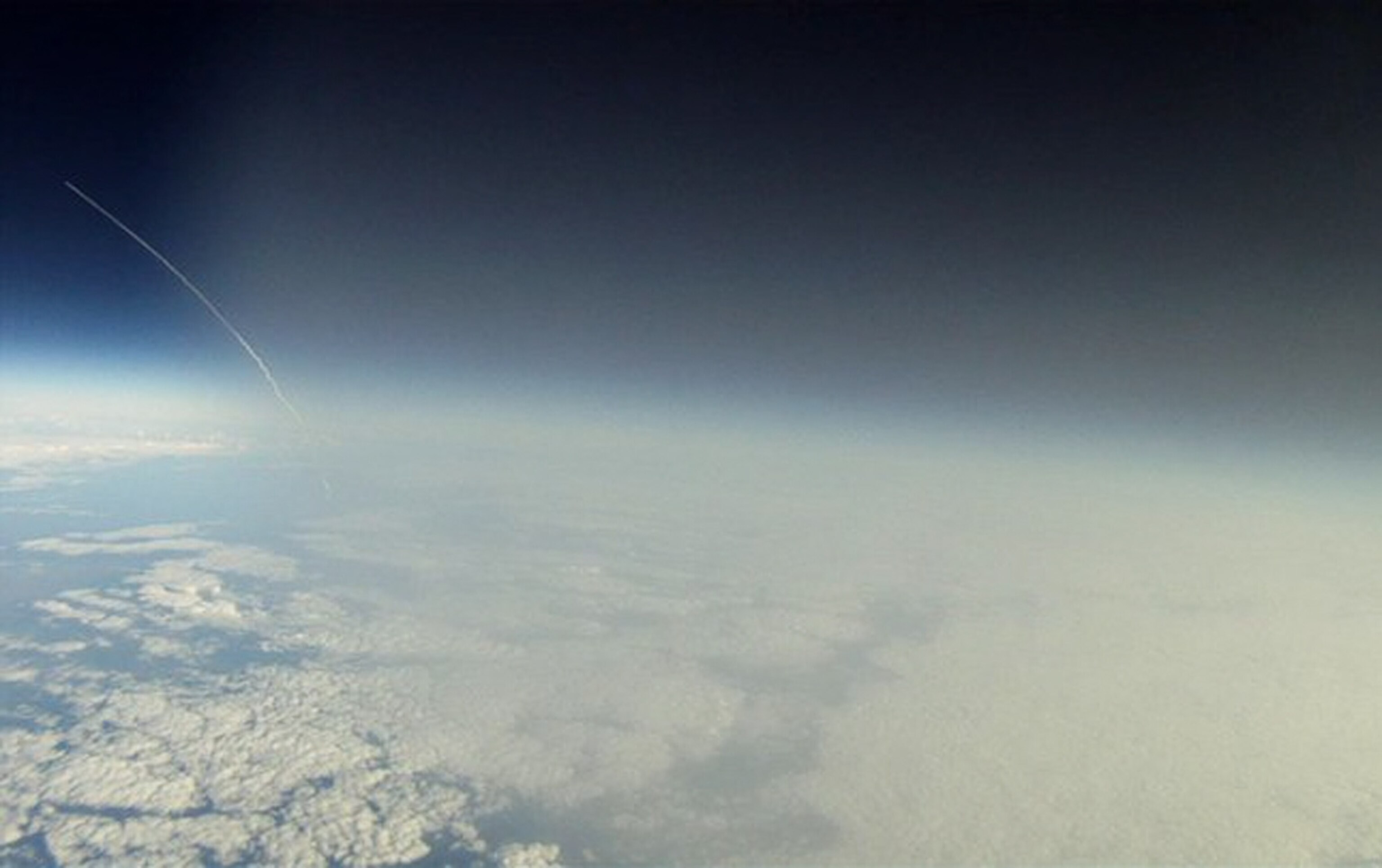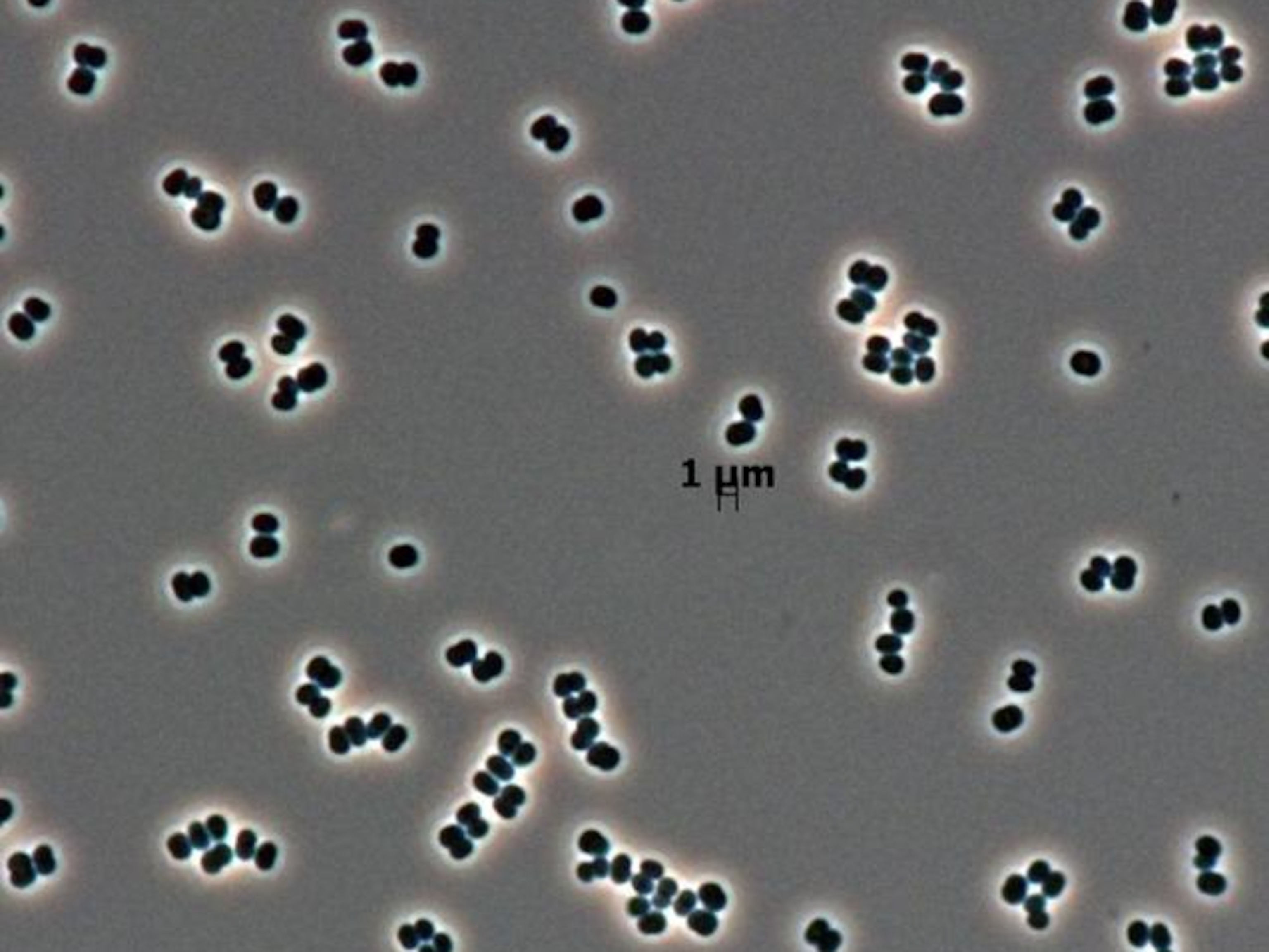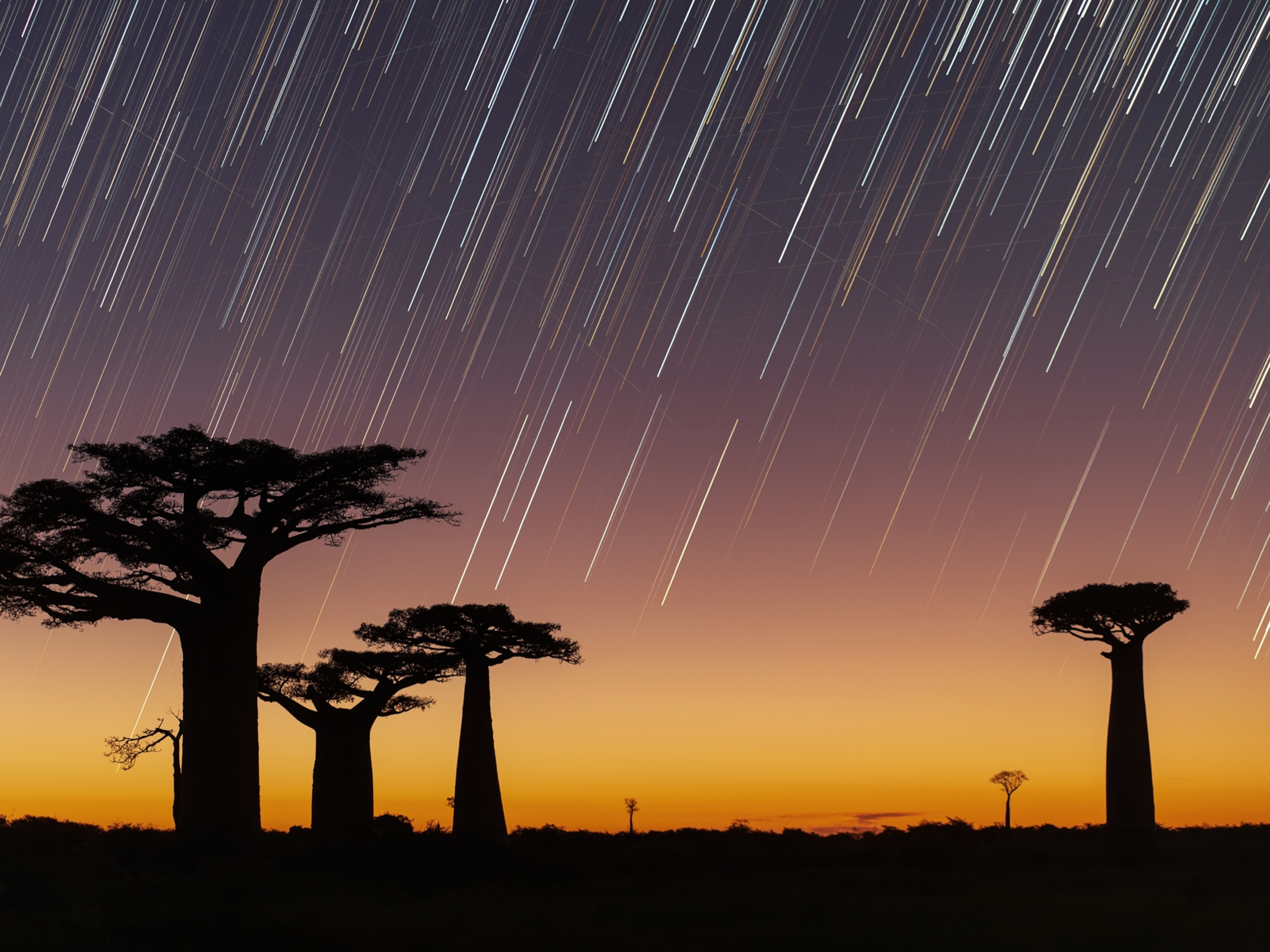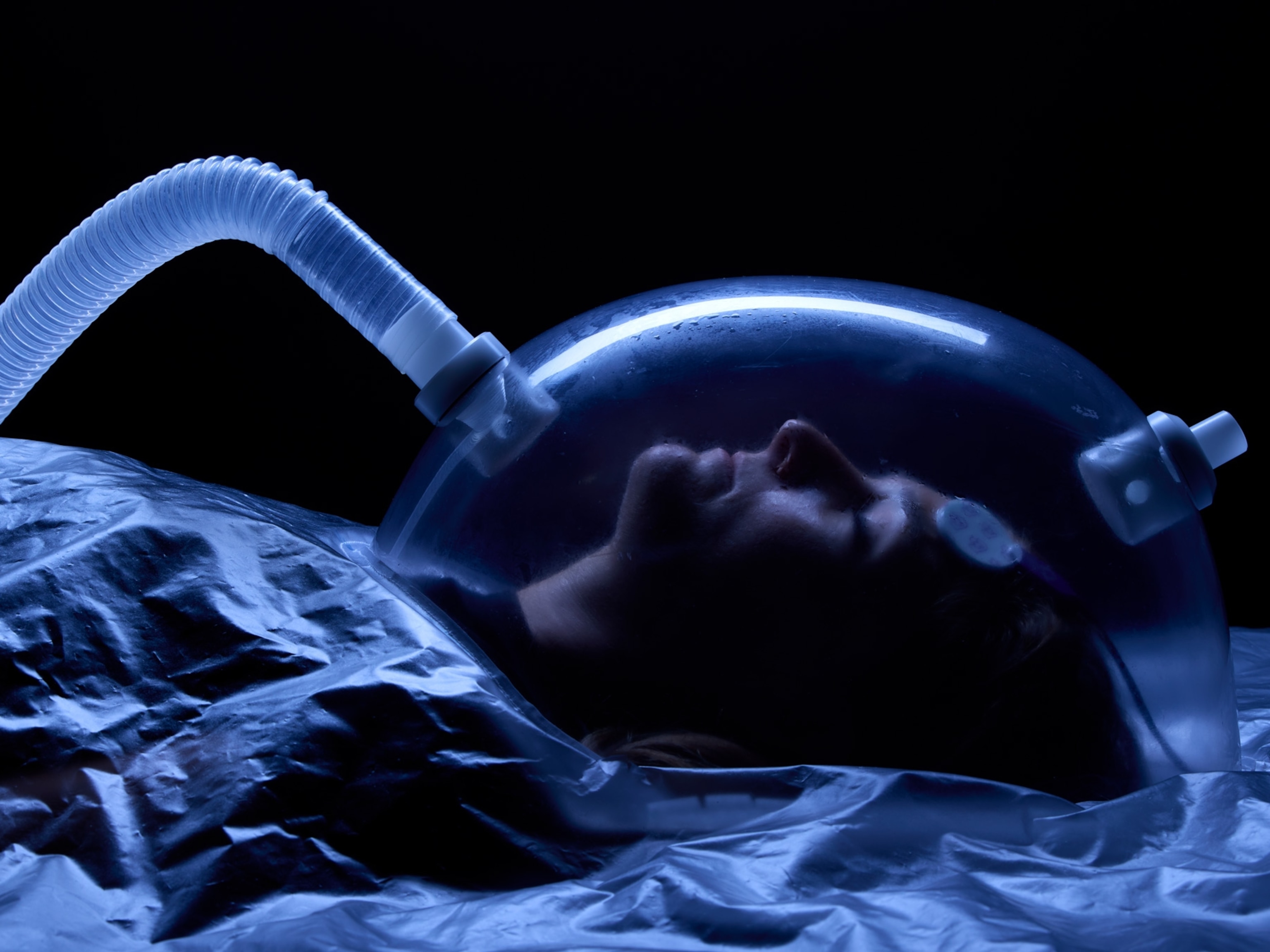Photograph courtesy Quest for Stars and Challenger Center
Pictures: Discovery Launch Seen via Miles-High Balloon
Built with student aid, a helium balloon loaded with cell phones and cameras captured the shuttle's liftoff from high above Earth.
March 9, 2011
